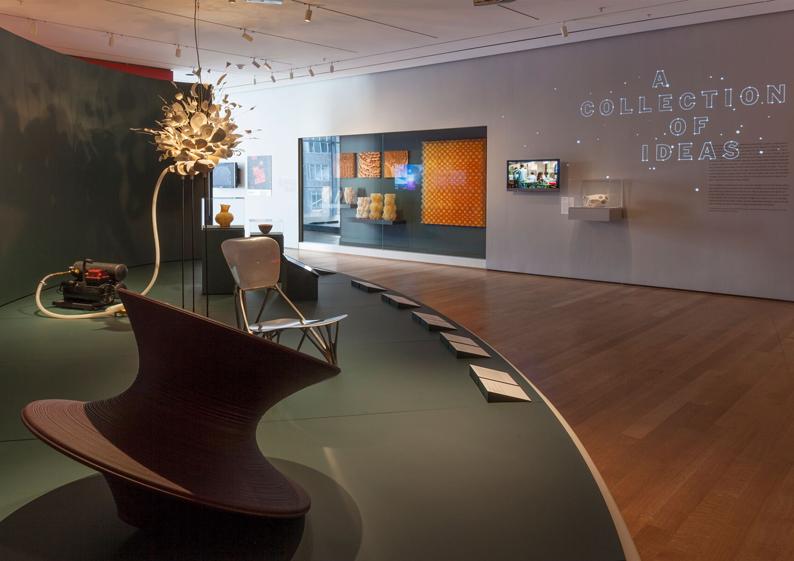


Paola Antonelli is Senior Curator of Architecture and Design and Director of Research and Development at the Museum of Modern Art (MoMA), New York. She is responsible for the acquisition of iconic objects including Gilbert Baker's Rainbow Flag, the @ symbol, and the video game Pac-Man.
Tell us a little about your background
I grew up in Italy. I studied economics and then architecture at the Polytechnic of Milan. I came to the United States about 26 years ago. For the first three years I was living between Milan and Los Angeles. I moved to New York 23 years ago, to take the job at MoMA.
Did you always want to move to New York?
No, not at all. I had nothing against the city, but I was not dreaming of moving here. And I really had a hard time at the beginning, much more so than in Los Angeles.
How does working from New York influence you?
Tremendously, of course. It would be impossible not to be deeply influenced by the city. I'd say that the most irresistible trait of the city is curiosity everyone is so eager to learn about the opinions of others.
Another appealing trait, believe it or not, is humility. My husband always says that when you go to a dinner in New York, you can be the greatest playwright in the world, a Nobel Prize winner, or the President of the United States, and you can be sure that the people sitting to your left and to your right are much more interesting than you, and have much more to say than you do.
How does your Italian heritage shape the way you work and appreciate architecture and design?
Every place in the world has particular cultural strengths. In Milan, that strength is design. I was lucky to grow up there and I made the best of it.
As a teenager, for three years I worked every afternoon after school in Armani's PR office. During and after architecture school, I had some of the best mentors one can dream of from the world of design, and I worked for magazines like Domus and Abitare. I had a chance to work on great exhibitions, starting out as an intern and gofer, and ending up as a curator.
Most importantly, I learned to view design - good design, not as a precious commodity but rather as normalcy. I learned to have expectations of quality for everyday products.
You've been described as someone who radically changes the perception of design in everyday life...
Rather than changing the perception, I'd like to say that I awaken it. Design is truly all around us, and all I do is to make sure people learn to observe it and recognise it: from traffic lights to the interface of the ATM machine; from chairs to the typeface of the newspaper; from the T-shirts on our back to the boots on the feet of construction workers.
With your work for MoMA, you have raised questions on what is good design. How do you see this progressing in the future?
Same as it ever was. Our needs as humans and citizens change, and so do our expectations. Technology advances and mutates. However, good design remains the same, an exquisite synthesis of means and goals - whether in the physical or in the digital realm - that adds something meaningful to the world. That can be said for both a vacuum cleaner and a video game, if they are really well designed.
The term Modern' seems intrinsic through all your work, not least because of your workplace. What does it mean to you, personally?
Modernity has always been my comfort zone. At least in architecture and design, it speaks of an attitude that is constructive, critical, although at times nave and idealistic, and always projected towards the future.
Once upon a time, several years ago, Kirk Varnedoe, a legendary curator of painting and sculpture here at MoMA, gave me a definition of modern' that still resonates. He said that modern is everything that does not hide the process of its making.
What does acquiring the art of our time mean in real terms? Can you give any examples of this in recent years?
Some of our most recent acquisitions have been digital codes, internet addresses, and symbols such as the @ sign. It's no longer necessary to have a physical possession of an object, which allows us to acknowledge the things that are too big or in the air and belonging to everybody and to no one.
Another good example of a universal symbol in our design collection is the iconic Rainbow Flag, designed in 1978 by artist Gilbert Baker. And most recently, we have acquired the first set of emoji.
The forthcoming MoMA exhibition: Items: Is Fashion Modern? explores the past, present and future of garments that have had an impact on society. Do you think clothing has the same impact as architecture and design?
Oh yes! Not only is clothing a form of design, but it is the form of design that has the most direct and intimate connection with people. Fashion is meaningful and influential, a force to be reckoned with - and one that could also be used for good.
Items: Is Fashion Modern? runs from October 1, 2017 to January 28, 2018
Interview by Andie Cusick. Imagery courtesy of MoMA.
Read other articles in the Curator's Eye series interviews here.
Add a comment